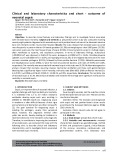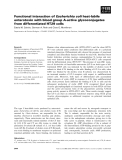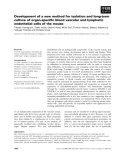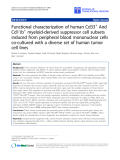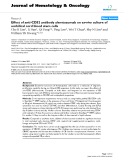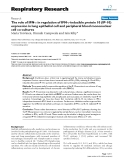
Blood culture
-
To describe clinical features and laboratory findings and to investigate factors associated with neonatal sepsis mortality. Subjects and methods: A prospective cohort study was conducted involving seventy-eight patients diagnosed with neonatal sepsis with positive blood cultures at the Neonatal Intensive Care Unit, Pediatric Center, Hue Central Hospital.
 8p
8p  vihatake
vihatake
 06-01-2025
06-01-2025
 8
8
 2
2
 Download
Download
-
India accounts for 30% of neonatal deaths globally. Bacterial sepsis is a significant cause of morbidity and mortality in newborns. The study helps to make antibiotic policy in neonatal sepsis. The main objective is to study the incidence of multidrug resistant gram negative and gram positive organisms causing neonatal septicemia and their antibiotic sensitivity pattern. The study was conducted in the Department of Microbiology over a period of one year. Sample of blood was collected under aseptic precautions and processed by standard techniques.
 5p
5p  gaocaolon5
gaocaolon5
 14-06-2020
14-06-2020
 29
29
 3
3
 Download
Download
-
Human colon adenocarcinoma cells (HT29-ATCC) and the clone HT29-5F7 were cultured under conditions that differentiate cells to a polarized intestinal phenotype. Differentiated cells showed the presence of junctional complexes and intercellular lumina bordered by microvilli. Intestinal brush border hydrolase activities (sucrase, aminopeptidase N, lactase and mal-tase) were detected mainly in differentiated HT29-ATCC cells compared with the differentiated clone, HT29-5F7.
 10p
10p  inspiron33
inspiron33
 25-03-2013
25-03-2013
 40
40
 3
3
 Download
Download
-
Endothelial cells are indispensable components of the vascular system, and play pivotal roles during development and in health and disease. Their properties have been studied extensively byin vivo analysis of genetically modified mice.
 11p
11p  media19
media19
 06-03-2013
06-03-2013
 57
57
 3
3
 Download
Download
-
Tuyển tập báo cáo các nghiên cứu khoa học quốc tế ngành hóa học dành cho các bạn yêu hóa học tham khảo đề tài: Functional characterization of human Cd33+ And Cd11b+ myeloid-derived suppressor cell subsets induced from peripheral blood mononuclear cells co-cultured with a diverse set of human tumor cell lines
 20p
20p  dauphong6
dauphong6
 04-01-2012
04-01-2012
 61
61
 7
7
 Download
Download
-
Tuyển tập báo cáo các nghiên cứu khoa học quốc tế ngành y học dành cho các bạn tham khảo đề tài:Effect of anti-CD52 antibody alemtuzumab on ex-vivo culture of umbilical cord blood stem cells
 10p
10p  toshiba24
toshiba24
 06-12-2011
06-12-2011
 53
53
 5
5
 Download
Download
-
Tuyển tập các báo cáo nghiên cứu về y học được đăng trên tạp chí y học 'Respiratory Research cung cấp cho các bạn kiến thức về ngành y đề tài: "The role of IFN-γ in regulation of IFN-γ-inducible protein 10 (IP-10) expression in lung epithelial cell and peripheral blood mononuclear cell co-cultures...
 11p
11p  toshiba12
toshiba12
 21-10-2011
21-10-2011
 45
45
 4
4
 Download
Download
-
Question 1: What environment does virus culture require? 1. Nutrient-rich, sterile agar medium. 2. Broth medium containing red blood cells. 3. The environment has sterile, receptor cells. 4. The environment must be sterile and have appropriate pH. 5. Environment has growth substances.
 16p
16p  womanhood911_07
womanhood911_07
 04-11-2009
04-11-2009
 7131
7131
 6105
6105
 Download
Download
CHỦ ĐỀ BẠN MUỐN TÌM








